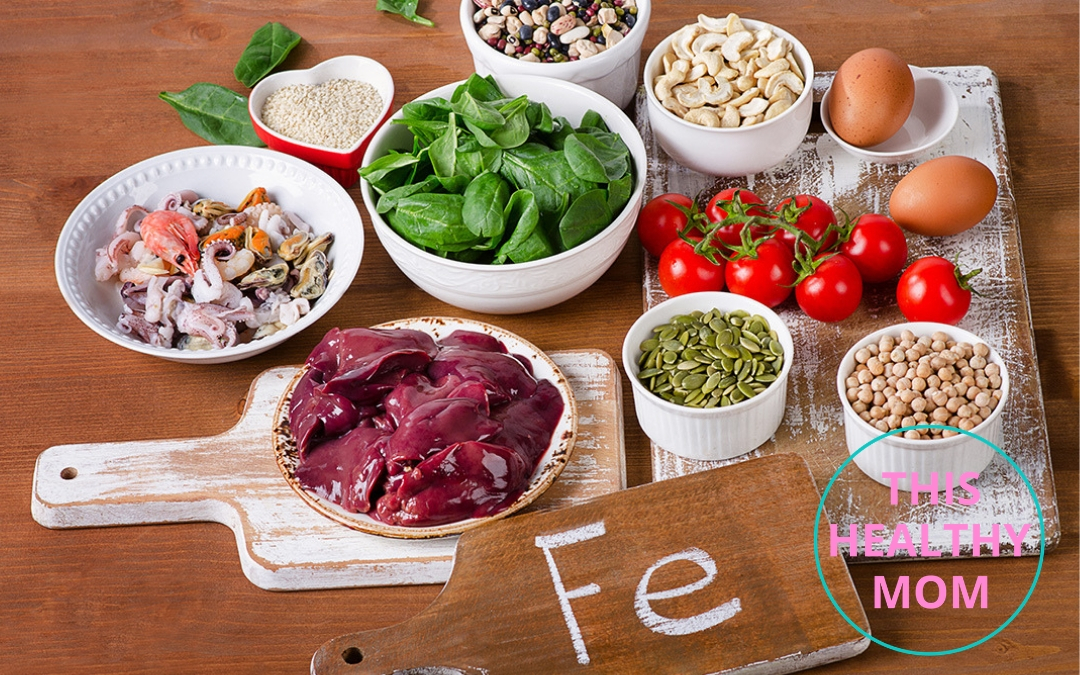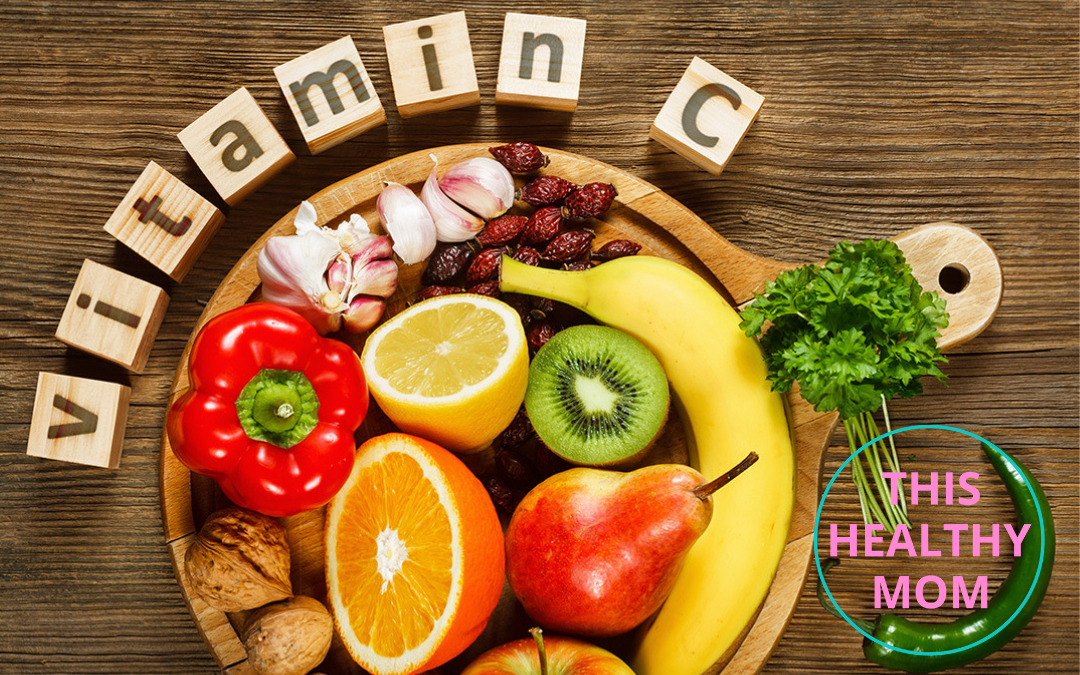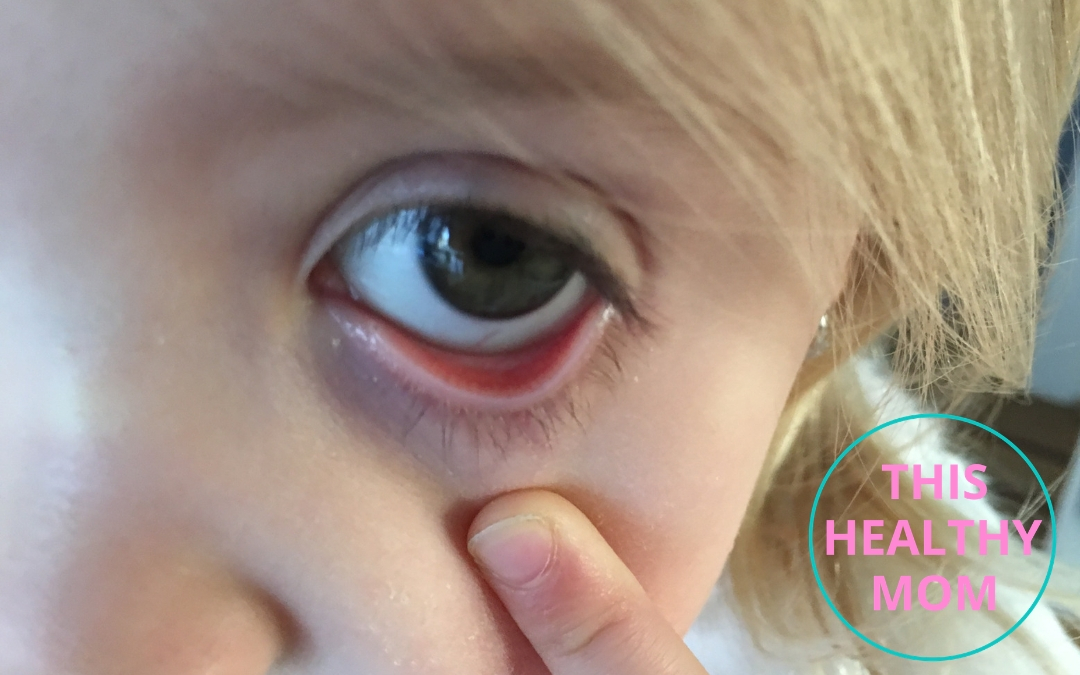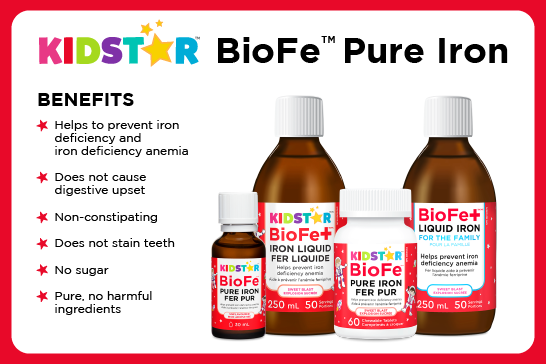What colour is your child’s lower eyelid? This simple check can help you figure out if your child has low iron. Gently pull down your child’s lower eyelid and check the colour of the inside of the eyelid. If the colour appears pale pink or whitish, your child may be low in iron.
The Role of Iron in the Body
Iron is essential for growth and development in children. Iron plays a major role in energy production. Low iron means less oxygen is delivered to your cells. Iron is part of hemoglobin, a protein in red blood cells that carries oxygen into the body’s tissues. Oxygenated blood is a dark, rich red colour.
Every day your body uses hemoglobin, which is your readily available iron, and that iron is drawn from your stored iron, ferritin. If we do not eat enough iron-containing foods and fill up our ferritin stores then our daily supply of iron slowly drop, leading to many health conditions associated with low iron levels.
Common Symptoms of Low Iron in Children
- Behavioural issues
- Dark circles under the eyes
- Slow growth
- More colds and flu
- Loss of appetite
- Pale skin
- Pale inside lower eyelids
- Pale fingernails
- Irritability
- Eating strange substances like ice or dirt (Pica)
How Kids Get Low Iron
Most of the discussions about iron focus on women due to the blood loss from menstruation but there is not much discussion about kids. How do kids end up with low iron?
Pregnant Women and Anemia
Low iron in kids can start during pregnancy. Many women have very heavy periods that can greatly diminish their iron stores. The World Health Organization states that approximately every second pregnant woman in the developing world is anemic. Doctors, midwives and other health care professionals encourage women to take a supplement with iron.
Iron in Breast Milk and Formula
Taking an iron supplement while pregnant and breastfeeding helps ensure the developing fetus and breastfeeding infant get adequate iron. Infant formulas and baby cereals are also fortified with iron to ensure infants are receiving enough iron from food.
Around 6 months after giving birth, iron levels in breast milk start to decline. The reduced iron in breast milk is naturally offset by the fact that this is also when most babies start eating some solid foods (hopefully containing iron). But getting iron into a baby, toddler or school-aged child can be challenging.
Picky Eaters and Low Iron
Even though most infant cereals are fortified with iron, many babies do not like the taste or texture. Your toddler may be very picky and be going through the white-pasta-with-white-sauce phase that all parents worry about. For some children, the picky food stage can last far into the elementary school years.
The problem is, if you aren’t looking, you do not notice symptoms of iron deficiency in children until it becomes a health concern. Iron deficiency is not a gaping wound or a digestive issue. When you finally realize your child is low in iron, it may take some work to get those iron levels back up.
Raising Low Iron Through Diet
To combat iron deficiency, ensure your child eats a healthy and balanced diet. Now this is easier said than done. I laugh because if I was able to put all the foods my two girls like to eat into one diet it would be perfectly balanced, but because they each like completely different foods it is not the case. One of my kids is a self-proclaimed vegetarian who can spot the hidden meat in any meal, while I have to persuade, bribe and trick my other child, a carnivore, who only eats the occasional vegetable.
Types of Iron in Food
There are two types of iron in food: heme and non-heme. Heme is found in flesh food (meat) and are easily absorbed. Non-heme iron is found in plant sources which the body has a hard time absorbing. Vitamin C is also important for aiding iron absorption. Encourage your children to eat the following foods.
Foods high in iron:
- Beef
- Poultry (chicken, turkey)
- Seafood
- Eggs
- Nuts
- Beans and lentils
- Dark green leafy vegetables
- Watermelons

Foods high in vitamin C:
- Green and red peppers
- Kale
- Broccoli, Brussel sprouts and cauliflower
- Strawberries
- Pineapples
- Mangos
- Kiwis

Iron Supplements for Children
Adding a nutritional supplement with iron may be the best option for the picky eater. Health Canada has a recommended daily amount of:
- 11 mg per day for children under 1 years of age
- 7 mg per day for ages 1 to 3 years of age
- 10 mg per day for children up to 8 years old
Many children’s multivitamin and mineral supplements contain iron at this level, which should be sufficient for most children. For children who already have low levels of iron, they need to take more than what you find in a common children’s multivitamin with minerals. How much more is determined by your healthcare practitioner.
What You Should Do If You Suspect Your Child Has Low Iron
If you think your child may have low iron levels, or iron deficiency anemia, make an appointment with your family doctor or health care provider. In the meantime, make a food diary of what your child is eating. Sometimes all it takes is for us to write something down and see it on paper to realize they just are not getting (or cannot get) what they need from their current diet.
Once at your appointment, talk to your doctor, pediatrician or health care practitioner to see if your child may have low iron levels. They may need a blood test to see ferritin and hemoglobin levels, which would tell if they needed additional supplementation above the standard recommended daily amounts.
The recommended amount of iron supplementation is calculated by the doctor and checked after 3 months to see if there has been an improvement. If the supplementation program is working, symptoms of low iron levels should gradually fade away.
This can be a long process since the body is using iron while trying to build back iron stores. If you suspect that your child is anemic or has low iron levels, make an appointment now to get tested. A simple change in diet or supplementation could make a world of difference.



Is the mg on daily intake of iron per kilogram or for the whole body?
Peter it’s for the whole body